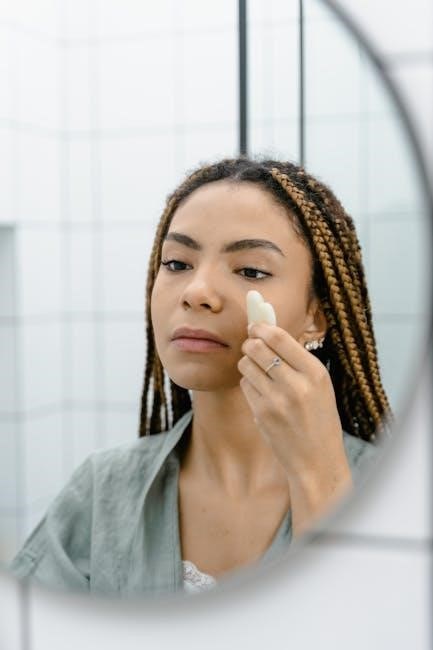
Mirror therapy increases brain activity, aiding recovery by providing visual feedback and preventing learned non-use․ It uses a mirror box and involves 5-10 minutes of daily exercises with affirmations․
1․1 What is Mirror Therapy?
Mirror therapy is a non-invasive technique using a mirror to create the illusion of movement in a damaged limb․ It helps improve motor function by tricking the brain into perceiving reflected movements as real․ This method is often used in stroke rehabilitation and for conditions like CRPS or phantom limb pain․ The setup involves placing the affected limb behind a mirror, with the healthy limb’s reflection appearing in its place, fostering neuroplasticity and reducing discomfort․ Regular practice enhances mobility and sensory perception, making it a valuable tool for recovery and pain management․
1․2 History and Development of Mirror Therapy
Mirror therapy originated in the 1990s, developed by neuroscientist V․S․ Ramachandran to treat phantom limb pain․ He observed that mirroring the healthy limb’s movements helped the brain “see” the affected limb, reducing pain and improving motor function․ Since then, it has evolved, gaining popularity in rehabilitation for stroke survivors and those with CRPS․ Research has validated its effectiveness, leading to its inclusion in physical therapy practices worldwide․ Its simplicity and non-invasive nature have made it a cornerstone in modern neurorehabilitation, with ongoing studies expanding its applications․
1․3 The Science Behind Mirror Therapy
Mirror therapy leverages the brain’s neuroplasticity, where neural pathways adapt and reorganize․ By using a mirror to reflect the healthy limb, the brain perceives the illusion of movement in the affected side․ This triggers activation in the motor cortex, enhancing recovery․ The therapy also reduces pain by altering pain perception pathways․ The mirror box creates a visual feedback loop, helping the brain relearn lost motor skills and integrate sensory information․ This non-invasive approach harnesses the brain’s ability to adapt, promoting healing and functional improvement in individuals with injuries or chronic conditions․
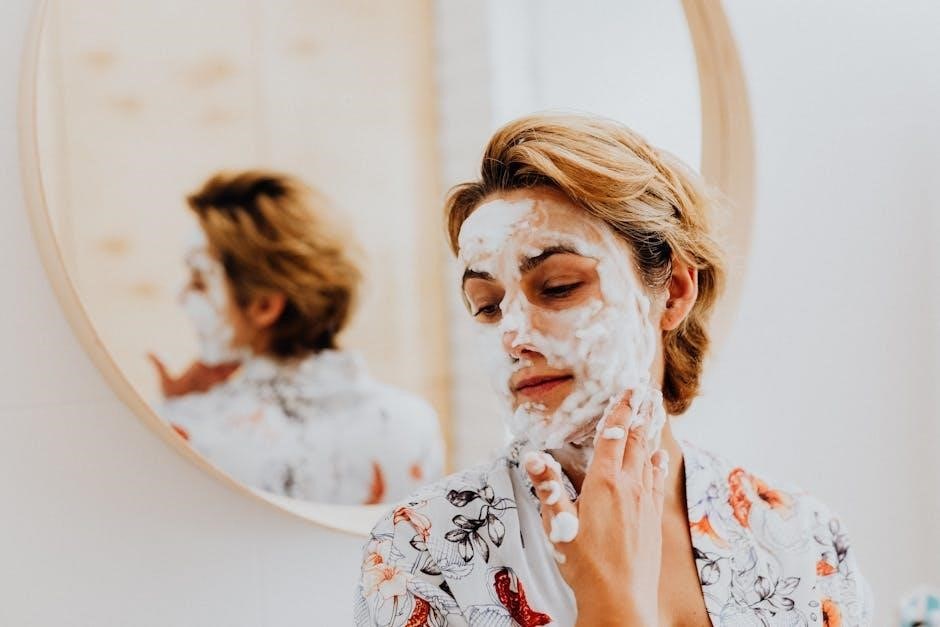
Benefits of Mirror Therapy
Mirror therapy is an effective approach enhancing motor function, promoting neuroplasticity, reducing pain, boosting psychological well-being, and offering holistic recovery and overall rehabilitation․
2․1 Improving Motor Function
Mirror therapy significantly enhances motor function by stimulating the brain’s motor control systems․ It helps individuals regain coordination, balance, and strength, especially after injuries or stroke․ By observing mirrored movements, the brain creates new neural pathways, improving muscle memory and reducing muscle atrophy․ This therapy is particularly effective for restoring limb function, enabling patients to perform daily activities with greater ease and precision․ Regular practice fosters long-term recovery and independence, making it a cornerstone of rehabilitation programs focused on regaining physical mobility and dexterity․
2․2 Enhancing Neuroplasticity
Mirror therapy is a powerful tool for enhancing neuroplasticity, the brain’s ability to reorganize itself by forming new neural connections․ By creating a visual illusion of movement, mirror therapy tricks the brain into perceiving motion in the affected limb, even when it is immobilized․ This stimulation activates motor control areas, promoting the growth of new neurons and strengthening existing pathways․ Regular practice fosters adaptability in the nervous system, leading to improved recovery outcomes and faster progress in rehabilitation programs․ It’s particularly effective for individuals with stroke, brain injuries, or chronic pain, helping restore lost motor skills and cognitive function․
2․3 Reducing Pain and Discomfort
Mirror therapy is highly effective in reducing pain and discomfort, particularly for conditions like complex regional pain syndrome (CRPS) and phantom limb pain․ By creating a visual illusion of normal movement, it tricks the brain into perceiving the affected limb as functional, which can significantly reduce pain signals․ Regular practice helps recalibrate the nervous system, offering relief from chronic discomfort․ This non-invasive approach is especially beneficial for individuals who struggle with traditional pain management methods, providing a drug-free alternative to alleviate suffering and improve quality of life․
2․4 Promoting Psychological Well-being
Mirror therapy plays a significant role in enhancing psychological well-being by boosting mood and reducing stress․ It helps individuals develop a positive body image, which is especially important for those with physical limitations or chronic conditions․ The reflective practice fosters self-awareness and confidence, allowing users to reconnect with their body in a meaningful way․ Regular mirror therapy sessions can also reduce anxiety and depression by providing a sense of control and empowerment․ This holistic approach not only heals the body but also nurtures mental health, promoting overall well-being and resilience․
Types of Mirror Therapy Exercises
Mirror therapy offers various exercises targeting different body parts, including upper limbs, lower limbs, facial muscles, and full-body movements․ These exercises aim to improve mobility, coordination, and symmetry, while enhancing overall physical and mental alignment․ Each type is tailored to address specific needs, ensuring a comprehensive approach to rehabilitation and wellness․ This section provides a detailed overview of the exercises, helping users choose the most suitable routines for their goals․
3․1 Upper Limb Exercises
Upper limb mirror therapy exercises focus on improving arm and hand movements․ These exercises involve performing symmetrical actions with both limbs in front of a mirror, creating the illusion of bilateral movement․ Activities include simple arm raises, wrist rotations, and finger flexions․ The mirror box enhances the brain’s perception, aiding in motor recovery and reducing pain․ Regular practice strengthens coordination and dexterity, making daily tasks easier․ Detailed routines for upper limb exercises can be found in the mirror therapy exercises PDF guide, ensuring a structured approach for optimal results․ Consistency and proper technique are key for meaningful progress․
3․2 Lower Limb Exercises
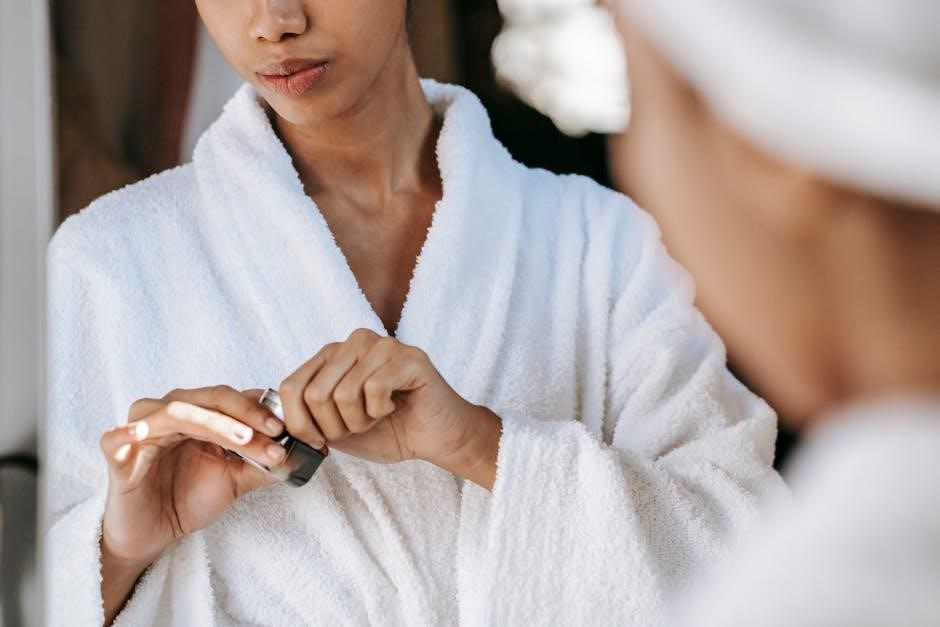
Lower limb mirror therapy exercises target the legs and feet to improve mobility and strength․ These exercises often involve activities like ankle rotations, toe curls, and marching in place while observing the reflection․ The mirror creates the illusion of bilateral movement, helping the brain relearn patterns․ This approach is particularly beneficial for individuals recovering from injuries or surgeries․ Regular practice enhances circulation, reduces stiffness, and improves balance․ The mirror therapy exercises PDF guide provides detailed routines for lower limb exercises, ensuring a comprehensive and structured rehabilitation process․ Consistency is crucial for achieving noticeable improvements in movement and function․
3․3 Facial Exercises
Facial mirror therapy exercises focus on improving symmetry and movement in facial muscles․ These exercises involve mirroring expressions, such as smiling, frowning, or raising eyebrows, while observing the reflection․ They are particularly effective for individuals with facial paralysis or asymmetry․ By practicing these exercises, patients can enhance motor control and coordination․ The mirror therapy exercises PDF guide includes detailed routines for facial exercises, emphasizing gradual progression to achieve natural movement․ Regular practice helps restore balance and confidence in facial expressions, promoting a more even appearance and improved emotional expression․
3․4 Full-Body Exercises
Full-body mirror therapy exercises involve coordinating movements across the entire body․ These exercises, detailed in the mirror therapy exercises PDF, include activities like mirroring tai chi movements, yoga poses, or dance steps․ Participants perform symmetrical actions in front of a mirror, enhancing coordination and balance․ The mirror provides visual feedback, helping improve posture and alignment․ These exercises are particularly beneficial for individuals recovering from injuries or those seeking to enhance overall physical harmony․ Regular practice fosters greater body awareness and fluidity, promoting holistic well-being and movement efficiency․ The exercises are adaptable to various fitness levels and goals․
Setting Up Mirror Therapy at Home
Setting up mirror therapy at home involves creating a dedicated space with a full-length mirror, ensuring proper lighting and minimal distractions․ This setup allows individuals to perform exercises effectively․
4․1 Creating a Mirror Box
To create a mirror box for mirror therapy, start by assembling a sturdy box with a length slightly longer than your arm․ Use a full-length mirror that fits snugly inside, securing it to one side of the box․ Ensure the box has openings on both ends for your limbs to pass through comfortably․ The mirror should be placed at a 45-degree angle to create a reflective illusion of symmetry․ Sand the edges for safety and maintain proper hygiene to ensure safe use during your mirror therapy exercises․
4․2 Choosing the Right Mirror
For effective mirror therapy, select a mirror that is large enough to reflect the entire affected limb clearly․ Glass mirrors are preferable over acrylic ones for sharper reflections․ Ensure the mirror has a sturdy frame to prevent breakage․ Position it in a stable, well-lit area to avoid distortions․ Secure the mirror to prevent accidents during exercises․ You can find suitable mirrors at therapy equipment stores or online retailers specializing in rehabilitation tools․
4․3 Setting Up a Quiet Environment
Create a quiet, distraction-free space for mirror therapy to enhance focus and relaxation․ Minimize background noise and ensure the area is free from clutter or tripping hazards․ Use soft, natural lighting to avoid harsh reflections․ Maintain a comfortable temperature to prevent discomfort during sessions․ Consider personal preferences, such as having water nearby or a chair for rest․ Incorporate calming elements like neutral colors or plants to foster a soothing atmosphere․ This setup helps optimize the effectiveness of mirror therapy exercises and promotes mental clarity․
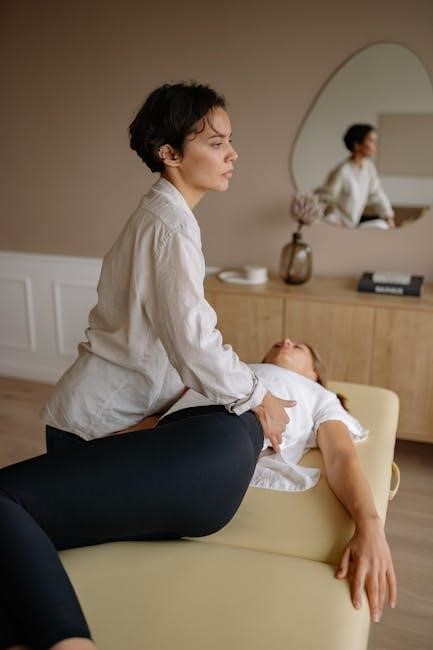
5․Mirror Therapy Exercises for Specific Conditions
Mirror therapy effectively addresses various conditions by providing visual feedback and tricking the brain to improve mobility and reduce discomfort, enhancing recovery and well-being․
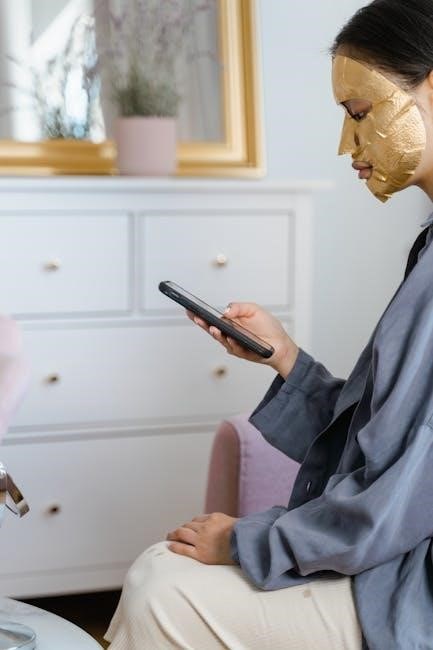
5․1 Stroke Rehabilitation
Mirror therapy is widely used in stroke rehabilitation to improve motor function and mobility․ By mirroring the unaffected limb, patients can retrain their brain to regain control over the affected side․ This technique enhances neuroplasticity, allowing the brain to form new pathways and recover lost functions․ Regular exercises can reduce muscle tightness, improve coordination, and boost confidence․ Patients often experience significant progress in regaining independence in daily activities․ Customized mirror therapy exercises, as outlined in the PDF guide, are tailored to address specific stroke-related challenges, making it a valuable tool for recovery and rehabilitation․
5․2 Complex Regional Pain Syndrome (CRPS)
Mirror therapy is effective in managing Complex Regional Pain Syndrome (CRPS) by reducing pain and improving limb function․ By mirroring the unaffected limb, patients can recalibrate the brain’s pain perception․ Exercises in the PDF guide focus on gradual movements, helping to desensitize the affected area․ Regular practice can reduce discomfort, restore mobility, and enhance overall well-being․ The structured approach in the guide ensures patients can safely perform exercises, often under professional guidance, to alleviate CRPS symptoms and regain control over their condition․
5․3 Phantom Limb Pain
Mirror therapy is highly effective in addressing phantom limb pain, a common condition among amputees․ By using a mirror to create the illusion of the missing limb, patients can reduce discomfort and regain a sense of control․ The exercises in the PDF guide focus on slow, controlled movements, helping to rewire the brain’s perception․ Regular practice can significantly alleviate pain and improve motor function, providing both physical and psychological relief․ The guide offers step-by-step instructions tailored to manage this condition effectively and promote long-term recovery․
5․4 Sports Injuries
Mirror therapy is a valuable tool for athletes recovering from sports injuries, offering a non-invasive way to restore movement and reduce pain․ The exercises in the PDF guide are designed to target common injuries, such as sprains or muscle strains, by enhancing neuromuscular control․ By mimicking healthy limb movements, athletes can improve flexibility and strength without risking further damage․ The guide also includes routines to prevent muscle atrophy and promote faster recovery, helping athletes return to their activities with confidence and reduced risk of re-injury․

Psychological Aspects of Mirror Therapy
Mirror therapy enhances mental well-being by fostering a positive body image and reducing anxiety․ It promotes self-awareness, empowering individuals to rebuild confidence and embrace their recovery journey․
6․1 The Role of Affirmations
Affirmations play a crucial role in mirror therapy by reinforcing positive self-perception․ Positive statements, such as “I am capable and strong,” help reframe thoughts about the body․ This practice enhances self-esteem and confidence, fostering resilience during recovery․ Affirmations also reduce self-criticism and negative self-talk, creating a supportive mental environment for healing․ When combined with mirror exercises, affirmations can deepen the mind-body connection, promoting emotional and psychological well-being․ Regular use of affirmations can lead to long-term improvements in mental health and overall quality of life․
- Example affirmations: “I trust my body’s ability to heal,” or “I am worthy of wellness and strength․”
6․2 Overcoming Negative Self-Talk
Mirror therapy helps individuals challenge and overcome negative self-talk by fostering self-awareness and self-compassion․ By observing their reflections, people can identify and reframe harmful thought patterns․ Positive affirmations and mindful observations during exercises encourage a more constructive inner dialogue․ This practice reduces self-criticism and builds resilience, helping individuals develop a more balanced and supportive relationship with themselves․ Regular mirror work can lead to lasting improvements in self-perception and emotional well-being․
- Example: Replace “I can’t do this” with “I am learning and growing․”
6․3 Building Confidence
Mirror therapy is a powerful tool for building confidence by fostering self-awareness and positive self-perception․ Regular practice helps individuals observe their progress, reinforcing a sense of accomplishment․ Positive affirmations during exercises encourage self-empowerment, while the act of witnessing improvement strengthens self-esteem․ This practice teaches individuals to embrace their abilities and celebrate small victories, leading to greater confidence in their daily lives․ Over time, mirror therapy cultivates resilience and a more positive self-image․
- Example affirmations: “I am capable,” “I trust myself,” or “I celebrate my growth․”
6․4 Radical Openness
Mirror therapy encourages radical openness, a mindset that fosters honesty and acceptance of one’s experiences․ By confronting reflections without judgment, individuals can embrace their true selves, including vulnerabilities․ This openness allows for deeper self-awareness and reduces resistance to change․ Practicing radical openness during mirror exercises helps individuals process emotions and challenges more effectively, leading to personal growth and self-compassion․ It creates a safe space for self-expression and healing, empowering individuals to approach their therapy journey with authenticity and courage․
Example: Reflecting on emotions during exercises can enhance emotional clarity and acceptance․
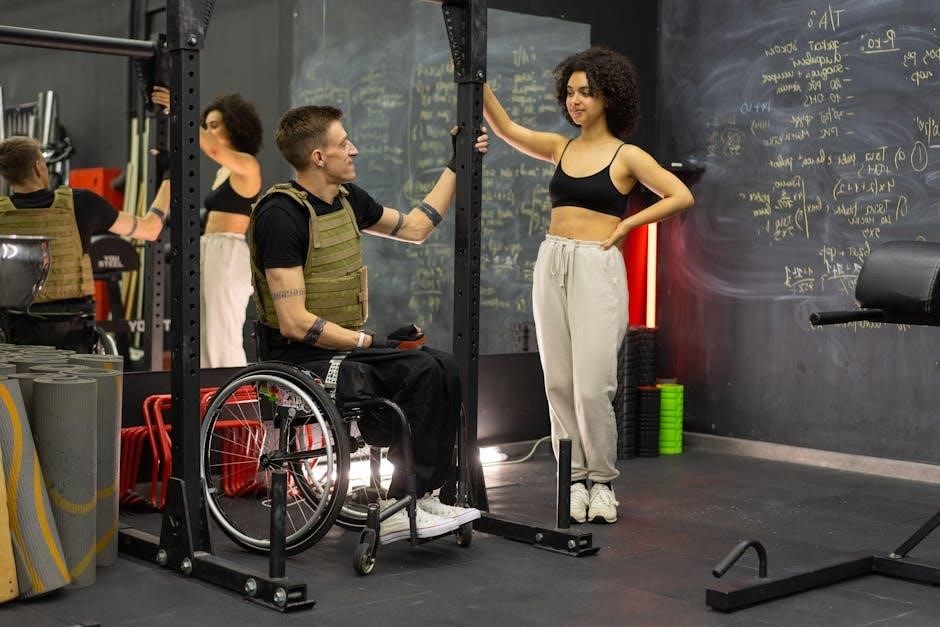
Creating a Daily Mirror Therapy Routine
A consistent routine enhances progress․ Start with short sessions, gradually increasing duration․ Set clear goals, track improvements, and adjust exercises as needed․ Stay committed for best results․
Key tip: Allocate specific times daily and maintain discipline for optimal effectiveness․
7․1 Setting Goals
Setting clear, achievable goals is essential for a successful mirror therapy routine․ Define specific objectives, such as improving mobility or reducing pain, and align them with your therapy plan․ Ensure goals are measurable, attainable, relevant, and time-bound (SMART)․ This framework helps track progress and maintain motivation․ Celebrate small milestones to boost confidence and stay committed․ Regularly review and adjust goals to reflect improvements or new challenges․ Having a focused mindset enhances the effectiveness of mirror therapy exercises and promotes long-term success․
Tip: Write down your goals and revisit them weekly to stay on track․
7․2 Tracking Progress
Tracking progress in mirror therapy is crucial for understanding improvements and staying motivated․ Use a journal or app to document each session, noting the duration, exercises performed, and any changes in mobility or pain levels․ Take progress photos or videos to visually assess improvements over time․ Celebrate small achievements to maintain enthusiasm and adjust your routine as needed․ Regularly reviewing your progress helps identify patterns and areas for growth, ensuring a tailored and effective therapy plan․
Tip: Use a mirror therapy exercises PDF guide to log your daily progress efficiently․
7․3 Adjusting Exercises Over Time
As you progress in mirror therapy, it’s essential to adjust exercises to match your improving abilities․ Gradually increase the difficulty by introducing new movements or extending session durations․ For example, shift from simple finger exercises to more complex hand-eye coordination tasks․ This ensures continuous challenge and growth․ Use a mirror therapy exercises PDF guide to track and modify your routine effectively․ Regularly reassess your goals and incorporate feedback from therapists to tailor your exercises for optimal results․ This adaptive approach keeps your therapy dynamic and effective․
Tip: Stay flexible and open to change as your progress evolves․
7․4 Maintaining Consistency
Maintaining consistency is crucial for maximizing the benefits of mirror therapy exercises․ A regular routine helps reinforce neural pathways and promotes sustained progress․ Aim to practice at the same time daily, even if it’s just for a few minutes․ Consistency enhances muscle memory and strengthens the mind-body connection․ Use a mirror therapy exercises PDF guide to stay organized and track your sessions․ Over time, this dedication will lead to noticeable improvements in both physical and psychological well-being, making it a valuable long-term practice for overall health․
Advanced Mirror Therapy Techniques
Explore advanced methods like virtual reality integration, guided imagery, and cognitive exercises to enhance mirror therapy benefits․ Discover how combining techniques can deepen neural recalibration and improve outcomes․ Download the Mirror Therapy Exercise PDF Guide for detailed advanced routines and progress tracking․
8․1 Combining with Cognitive Exercises
Combining mirror therapy with cognitive exercises enhances neuroplasticity and accelerates recovery․ Cognitive exercises, such as memory tasks, problem-solving, or attention drills, can be performed simultaneously with mirror exercises․ This dual approach strengthens the brain’s ability to rewire itself, improving both physical and mental functions․ For example, focusing on mental math while performing mirror movements can boost concentration and coordination․ This integrated method is particularly beneficial for stroke survivors or those with brain injuries, as it promotes holistic healing and improves overall brain function․ Always consult a therapist to tailor the exercises to individual needs․
8․2 Incorporating Mindfulness
Incorporating mindfulness into mirror therapy enhances its effectiveness by fostering a deeper connection between the mind and body․ Practitioners focus on the present moment, observing sensations and movements without judgment․ This practice reduces mental distractions, allowing individuals to fully engage with their exercises․ Techniques include deep breathing, mindful observation of reflections, and non-judgmental awareness of physical sensations․ Mindfulness also helps reduce stress and anxiety, creating a more conducive environment for healing and recovery․ Regular mindfulness practice can amplify the benefits of mirror therapy, promoting both physical and emotional well-being․
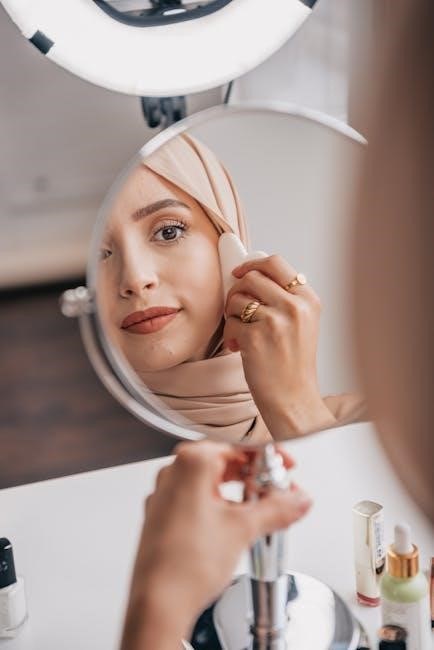
8․3 Using Technology
Technology enhances mirror therapy by providing innovative tools for practice․ Virtual reality (VR) systems create immersive environments, helping users focus on movements․ Mobile apps offer guided exercises, timers, and progress tracking․ Some platforms use cameras and AI to analyze movements, offering real-time feedback․ Additionally, wearable devices can monitor muscle activity, ensuring proper technique․ These tools make mirror therapy more engaging and accessible, especially for those with limited mobility․ They also allow for personalized routines, maximizing effectiveness and convenience․ Technology integrates seamlessly with traditional methods, modernizing this therapeutic approach․
8․4 Advanced Visualization Techniques
Advanced visualization techniques in mirror therapy involve sophisticated mental exercises to enhance motor recovery and pain management․ Techniques include present tense visualization, where individuals imagine themselves performing movements in real-time, and emotional connection, linking movements to positive emotions․ 3D visualization allows users to mentally rotate and explore movements from multiple angles․ These methods improve focus, engagement, and neural adaptation․ Regular practice strengthens brain-muscle connections, accelerating recovery and reducing discomfort․ Combining visualization with mirror work amplifies outcomes, making it a powerful tool for advanced therapy․
Safety Precautions
When performing mirror therapy exercises, start slowly to avoid dizziness or nausea․ Consult a therapist if you have specific conditions․ Monitor progress and stop if discomfort arises․
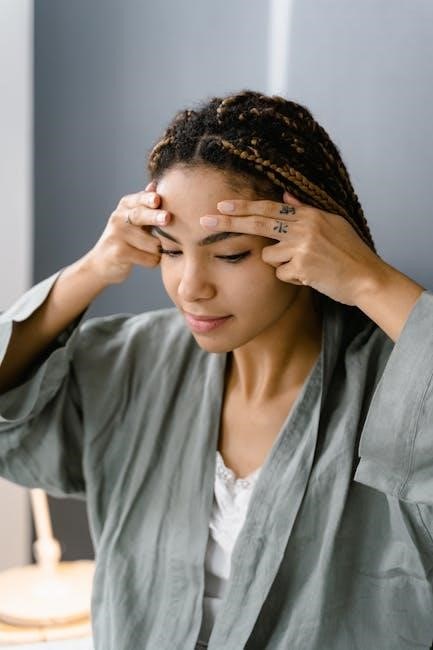
9․1 Avoiding Dizziness and Nausea
When performing mirror therapy exercises, some individuals may experience dizziness or nausea, especially during initial sessions․ To avoid this, start with short sessions of 5-10 minutes and gradually increase duration as tolerance improves․ Ensure the room is well-ventilated and maintain a comfortable sitting or standing position․ Avoid extreme angles or rapid movements in front of the mirror․ If dizziness occurs, pause the exercise, close your eyes, and take deep breaths․ Focus on slow, controlled movements and stay hydrated․ Consulting a therapist can help tailor exercises to your sensitivity levels․
9․2 Consulting with a Therapist
Consulting with a therapist is crucial for safe and effective mirror therapy․ A trained therapist can tailor exercises to your specific needs and ensure proper technique․ They can also monitor progress and adjust routines to prevent overexertion or injury․ A therapist’s guidance helps maximize benefits while minimizing risks, such as dizziness or nausea․ Regular check-ins allow for personalized feedback and address any concerns or side effects․ This collaboration ensures a structured and adaptive approach to mirror therapy, enhancing its effectiveness and safety․
9․3 Monitoring Progress
Monitoring progress in mirror therapy is essential to ensure effectiveness and safety․ Keep a daily journal to track improvements in mobility, pain levels, and emotional well-being․ Use the mirror therapy exercises PDF guide to log specific exercises performed and their outcomes․ Regularly review progress with a therapist to adjust routines as needed․ Consistency in documentation helps identify patterns and areas for improvement․ Over time, this data will guide personalized adjustments, ensuring the therapy remains effective and tailored to individual needs․ This systematic approach fosters accountability and long-term success․
9․4 Stopping When Necessary
Stopping mirror therapy when necessary is crucial to ensure safety and effectiveness․ If you experience dizziness, nausea, or increased pain, pause immediately and rest․ Sharp pain or discomfort in the affected area may indicate overexertion, requiring a break․ Consult your therapist if symptoms persist or worsen․ Prioritize your health by listening to your body and adjusting the routine as needed․ This approach helps maintain progress without causing harm, ensuring mirror therapy remains a beneficial and sustainable practice for recovery and well-being․

Resources and Downloads
Access a comprehensive Mirror Therapy Exercise PDF Guide, featuring step-by-step instructions, visual aids, and customizable workout plans for various conditions․ Download research articles, video tutorials, and progress tracking sheets to enhance your practice and monitor improvements effectively․
10․1 Mirror Therapy Exercise PDF Guide
The Mirror Therapy Exercise PDF Guide is a comprehensive resource designed to help individuals incorporate mirror therapy into their daily routine․ It includes detailed step-by-step instructions for various exercises targeting upper limbs, lower limbs, and full-body movements․ The guide also provides visual aids and safety precautions to ensure proper practice․ Additionally, it offers tracking sheets to monitor progress and adjust routines as needed․ This downloadable guide is ideal for both beginners and advanced practitioners, serving as a convenient reference for maximizing the benefits of mirror therapy․
10․2 Research Articles
Research articles provide in-depth insights into the effectiveness of mirror therapy exercises․ Many studies, available as PDF downloads, explore its benefits for conditions like CRPS, stroke rehabilitation, and phantom limb pain․ These articles often include clinical trials, case studies, and meta-analyses, offering evidence-based support for its use․ Platforms like PubMed, Google Scholar, and ResearchGate host numerous free and accessible PDFs․ Topics range from neuroplasticity mechanisms to practical applications․ These resources are invaluable for researchers, therapists, and patients seeking to understand the science and clinical outcomes of mirror therapy exercises․
- Clinical trials on mirror therapy effectiveness․
- Neurological mechanisms explained in detail․
- Case studies demonstrating real-world applications․
10․3 Video Tutorials
Video tutorials are an excellent resource for mastering mirror therapy exercises․ They provide step-by-step demonstrations, making it easier to understand proper form and technique․ Many tutorials are available on platforms like YouTube and specialized therapy websites, covering exercises for various conditions, such as stroke recovery or CRPS․ These videos often include expert commentary and real-time examples, ensuring users can follow along safely and effectively․ Some tutorials also offer modifications for different fitness levels, allowing individuals to progress at their own pace․ Watching videos regularly can enhance learning and consistency in practice․
10․4 Progress Tracking Sheets
Progress tracking sheets are essential tools for monitoring improvements during mirror therapy exercises․ These sheets allow users to document their daily exercises, note any physical or emotional changes, and track progress over time․ By recording details such as exercise duration, pain levels, and mobility improvements, individuals can identify patterns and stay motivated․ Many PDF guides include customizable tracking sheets with checkboxes, rating scales, and reflection sections․ Regularly reviewing these sheets helps users celebrate small victories and adjust their routines as needed, fostering a sense of accomplishment and fostering consistency in their practice․